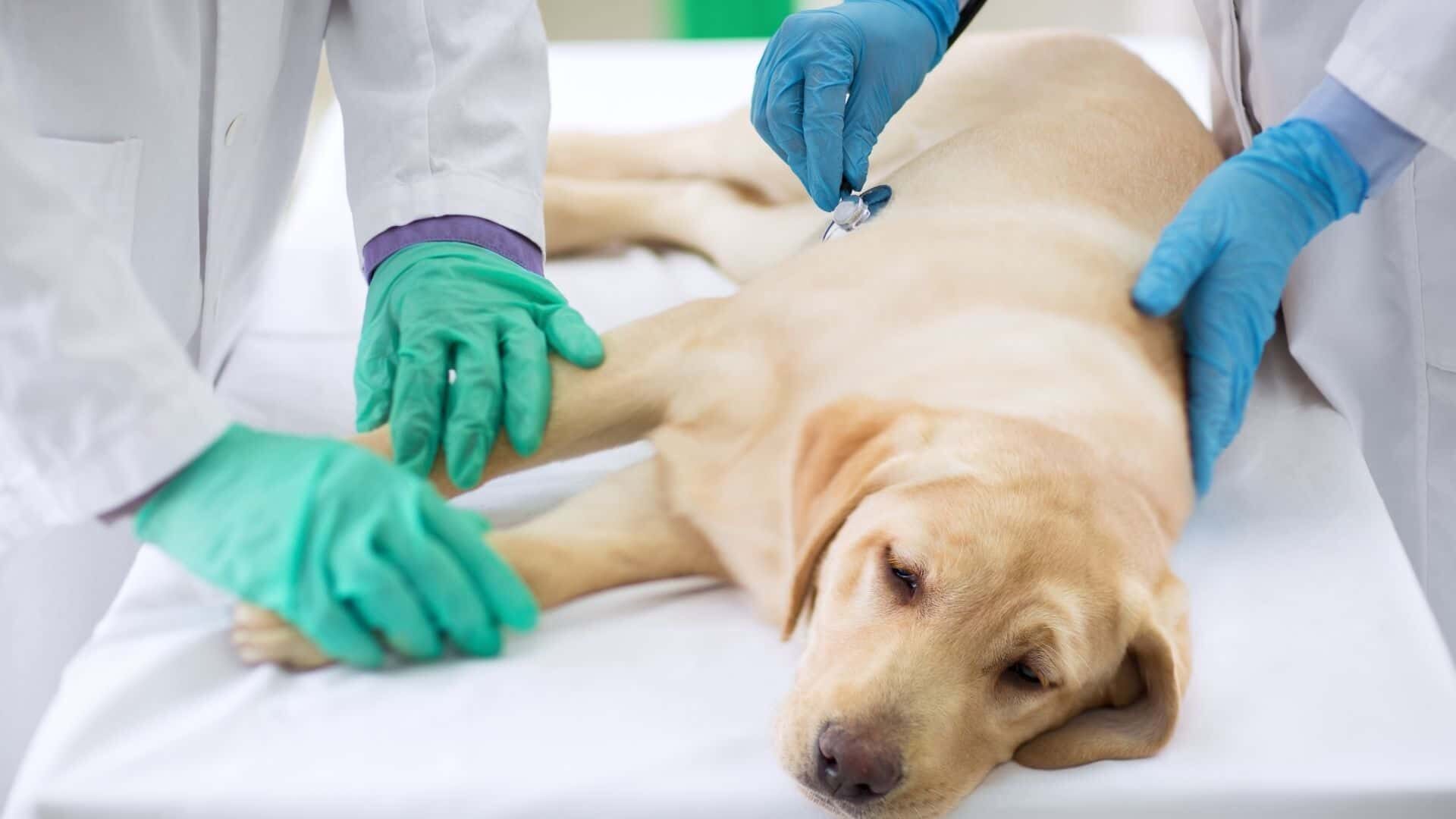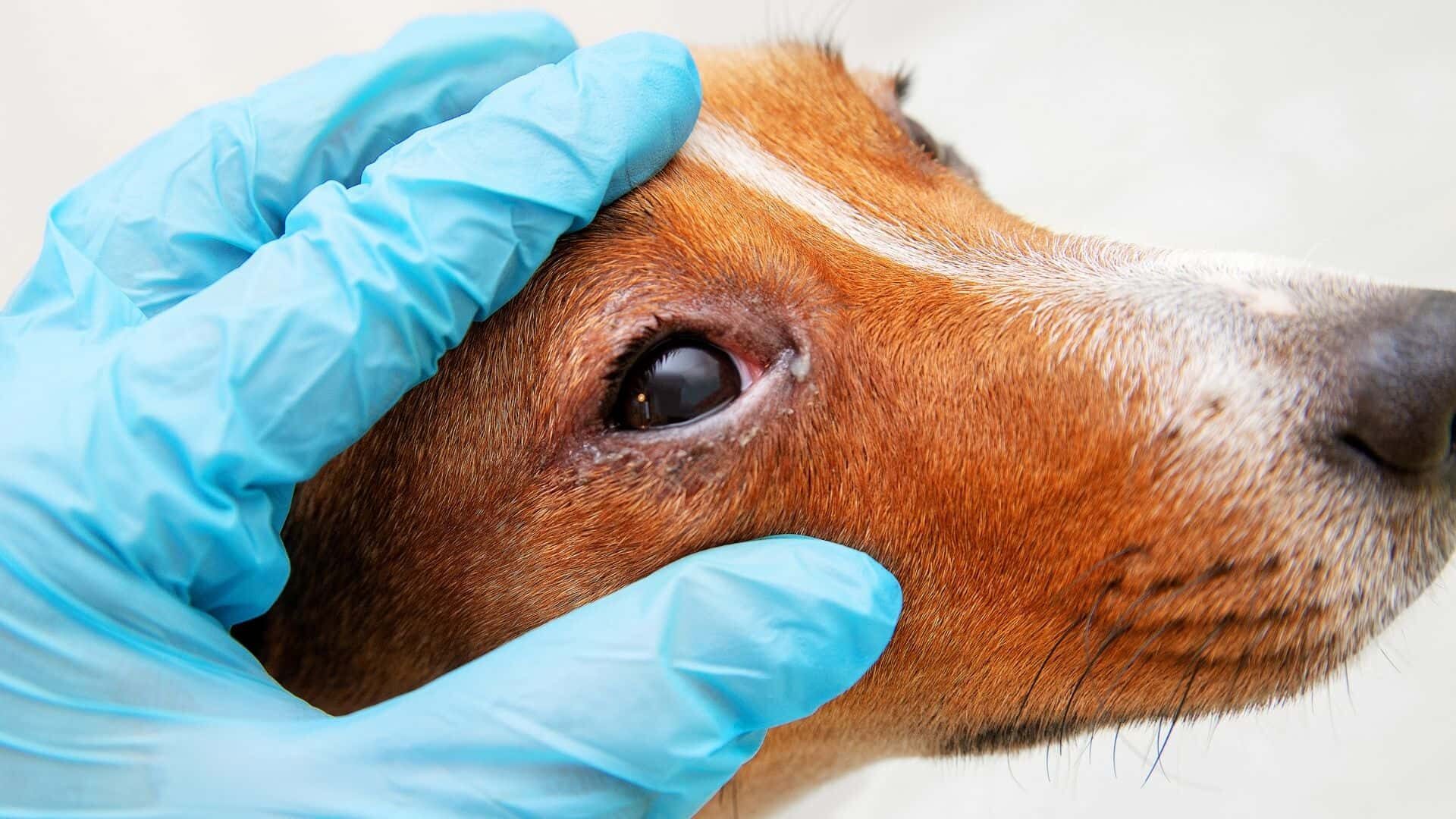Allergies to proteins in an animal’s skin cells, saliva, or urine are known as “pet allergies.” Sneezing and a runny nose are common symptoms of hay fever in people who are allergic to pets. Asthma symptoms such as wheezing and breathing difficulties can be experienced by some people.
The flakes of dead skin (dander) that a pet sheds are the most common cause of pet allergies. Pet allergies can affect any animal that has fur, but cats and dogs are the most common culprits.
As a precaution, if you have a pet allergy, you should avoid or minimize your contact with the animal as much as possible. Asthma management may necessitate the use of medications or other treatments in order to alleviate symptoms.
Have you ever been told that a dog suffers from allergies? Has your veterinarian suggested that allergies could be a problem for your dog? Do you suspect that your dog has allergies? When it comes to allergies in dogs, things can be a little more complicated than they first appear. For starters, your dog may be suffering from a variety of different allergies.
What does it mean to have an allergy?
An allergy is characterized by the immune system’s overreaction or hypersensitivity to an allergen. Proteins from plants, insects, animals, or food are the most common allergens.
“The immune response can actually be harmful to the body when it is triggered by allergies.”
When the immune system is exposed to the allergen multiple times over a period of months or years, it becomes more sensitive to the allergen and overreacts when exposed to it again. An allergic dog’s immune response may actually do more harm than good. Normally, the dog’s immune system works to keep him healthy and free of disease and infection. If you think of allergies as an unnecessary immune response to a harmless foreign substance, you’re right.
A variety of immune responses play a role in the development of allergies. A mast cell is a type of cell in the immune system that binds to the allergen protein molecules in the blood. Many tissues in the body contain mast cells. Local inflammation, such as redness, swelling, and itching, occurs when mast cells react with the antigen and antibody and release potent chemicals like histamines. An allergic reaction manifests as a variety of symptoms due to the inflammation that results.
What are the types of allergies in dogs?

Allergies are caused by the body’s immune system reacting incorrectly to foreign substances, which can affect both humans and animals. There are quite a few different types of allergies in dogs. Anxiety can be exacerbated by the fact that dogs and their owners can suffer from a variety of different allergies, including skin, food and environmental allergens.
1. Skin allergies
Allergies to dogs’ skin, also known as allergic dermatitis, are extremely common. Dogs’ allergies to their own skin can be caused by any of the following three factors:
- Dermatitis due to flea allergy
- Food intolerances
- Asthma triggers in the natural environment
An allergic reaction to fleabites is known as flea allergy dermatitis. Flea saliva can cause anaphylaxis in some dogs. An itchy, red, inflamed and scabbed skin can be seen in dogs who are affected by this condition. Flea dirt or fleas themselves may be visible, as well as other signs of flea infestation.
Additionally, food allergies and sensitivities can lead to an itchy skin condition. Food allergies commonly cause itching in the ears and paws of dogs, and this can be accompanied by digestive problems.
Atopic reactions or atopic dermatitis can be triggered by allergens found in the environment, such as dust, pollen, and mold. You may only notice your dog’s itching at certain times of the year due to seasonal allergies. With food allergies, the paws and ears are the most common areas affected (but also include the wrists, ankles, muzzle, underarms, groin, around the eyes, and in between the toes).
There is a risk of secondary infection with all skin allergies. Yeast and bacterial infections can develop when your dog scratches, bites, and licks at his skin, which may necessitate treatment.
2. Allergies that are Seasonal or Environmental
Allergies caused by substances found in your home, backyard or wherever your dog spends time are referred to as atopy or environmental allergies.
As with pollen, these allergens can be inhaled or absorbed through your dog’s skin if he comes into contact with them. Pollens, plant or animal fibers, dust mites, and mold spores are among the most common allergens that cause these reactions.
3. Allergies to food
Dr. Jerry Klein, the AKC’s Chief Veterinary Officer, believes that true food allergies may not be as common as many people believe. There is an immune response in the body when someone has a true food allergy.
The symptoms of this immune response can range from skin conditions to gastrointestinal signs (vomiting and/or diarrhea) to both. Anaphylaxis, the life-threatening reaction experienced by people with severe peanut allergies, can occur in extremely rare cases.
Isn’t there a special hypoallergenic dog food diet for those dogs?
A food sensitivity, also known as a food intolerance, is what most people mean when they say their dog has a food allergy. There is no immune system response to foods that cause food sensitivities; rather they are gradual reactions to an offending ingredient in your dog’s food, such as beef or chicken or eggs and corn or wheat and soy.
Dogs with food sensitivities may display a variety of symptoms, including gastrointestinal issues like vomiting and diarrhea, as well as dermatologic issues like itchy skin, poor coat quality, and chronic ear and foot infections.
A food allergy is best diagnosed and treated by working with your veterinarian to control your dog’s symptoms and discover the ingredient causing the reaction.
Is it common for a dog to develop allergies?

Allergies in pets are common, whether they are caused by the surroundings or the food they eat. Your dog is therefore likely to have them.
In Carvalho’s opinion, certain breeds are more prone to allergies than others, and this does not change as a pet gets older.
What factors contribute to allergic reactions in dogs?
A dog’s saliva, dander, and urine all contain proteins that have been secreted by the dog. Sensitive people can experience an allergic reaction when their immune system overreacts to normally non-harmful proteins. You may be more allergic to some breeds of dogs than others because they produce different amounts of dander.
In time, the allergen is found in the animal’s coat.
As a result, it accumulates on surfaces such as carpets, clothing, walls, and even the cushions of couches. As a whole, pet hair isn’t an allergen, but it can collect dust and dander from the air around your home.
Pet dander can also linger in the air for a long time. Your eyes or lungs may become infected by it at some point.
Foreign substance
Asthma is an allergic reaction to a foreign substance like pollen, mold, or pet dander that your immune system recognizes as foreign.
Antibodies are proteins that your immune system produces. Antibodies guard your body against foreign invaders that could harm you or infect you. In the case of allergies, your immune system creates antibodies that mistakenly label a harmless substance as harmful.
Allergic reactions are triggered when a person inhales or comes into contact with an allergen. An allergen can cause long-term (chronic) airway inflammation if it is frequently inhaled.
What are the tests for the Allergies of Dogs?
Testing for allergies can be helpful, but it is not always certain whether or not the results are accurate. As a result, if you have a dog, your doctor may ask you to live without it for a period of time to see if it affects your health. It may take some time apart to get a clear picture of your symptoms. Dog dander can build up in a home for months before it reaches a level similar to that of a house without a dog.
As a first step, your vet may perform a physical exam to rule out any underlying health issues. If your veterinarian suspects an allergy is to blame, he or she may suggest allergy testing to identify the allergen causing the reaction. However, it is important to keep in mind that testing may not always reveal the cause of an allergy.
An elimination diet is often used to diagnose food allergies. For 12 weeks, a dog is fed a new (i.e. one) protein and carbohydrate source in a food trial.
Flea allergy dermatitis is usually the simplest allergy to identify. If you find fleas on your dog, you can usually treat them with a product that kills the fleas before they have a chance of biting.
What are the types of treatment available for canine allergy?

If the vet determines that your dog is allergic to a specific substance, the treatment for allergies will be different. Examples of possible approaches to treating allergies taken from the perspective of a veterinarian are provided below.
1. Flea Allergy Treatment
Flea allergy dermatitis treatment aims to alleviate the itching and irritation caused by fleas until they are exterminated. Strict flea control is required to get rid of allergy symptoms in a flea allergic dog.
Some of the best flea control products and medications can be found on the market. Topical medications include Advantage, Revolution, and Vectra, which are applied directly to your dog’s skin. Others, like Simparica, NexGard, or Comfortis, are taken orally in the form of chews. The best course of action is to speak with your pet’s veterinarian.
The dog’s environment must also be treated for fleas in extreme cases. Remove the vacuum bag and vacuum thoroughly to remove eggs, larvae, and pupae. Pesticides can be used inside and outside the home to control fleas at every stage of their development.
Flea eggs and larvae must be prevented from hatching by using an insecticide that contains an insect growth regulator, such as methoprene or pyriproxyfen. When hiring an exterminator, be sure to specify that the treatment is for fleas.
2. Food Allergy Treatment
For dogs with food allergies, feeding a hypoallergenic diet for 8-12 weeks is the best course of action. This is the only way to tell if your dog is allergic to a particular food.
In order to avoid allergic reactions, hypoallergenic diets either have a limited number of ingredients or are processed in a special way (hydrolyzed). As long as it hasn’t been fed that food before, a dog can’t be allergic to it.
Consult with your veterinarian to determine the best diet for your pet. Proper food testing does not call for the use of store-bought items. Additionally, treats, flavored medications as well as human food may have to be eliminated during this trial period.
3. Seasonal and environmental allergy treatment
In cases where allergy testing has not been done, the treatment is symptomatic, which means it aims to reduce or eliminate your dog’s symptoms. The following are examples of possible therapies:
- Such as Apoquel (Atopica), Atopica (antihistamine), or other oral medications
- Cytopoint, for example, is an injectable medication.
- Lipids that are rich in fat
- Steroids
- Bathing on a regular basis
There is a high risk of serious side effects if steroids are used long-term to treat allergies.
What are the natural remedies for dog allergies?
In some cases, people with dog allergies can reduce their symptoms by using a saltwater rinse to flush out their nasal passages. Congestion and postnasal drip can be alleviated by “nasal lavage.”
Sprays and nasal lavage kits are easily accessible over the counter. To make your own, combine 1/8 teaspoon table salt with 8 ounces of distilled water and stir until salt dissolves.
Ways to lessen the likelihood of an allergic reaction in dogs
Allergies cannot be cured, and this is a sad fact. Allergies in dogs can’t be prevented.
However, there are things you can do to alleviate their discomfort and symptoms.
The first step is to identify the root cause, whether it be seasonal, food, flea, or anything else. From here, you can help your dog avoid those allergens and keep him healthy.
A prescription diet may be necessary in addition to year-round flea and ectoparasite control, Carvalho said in an interview. In order to avoid inflamed and infected skin and ears, pet owners should also be on the lookout for and treat any itches.
Keeping your dog healthy is always a good idea (unlike pollen, thankfully).
Watch Causes of seasonal allergies in dogs and how to treat them | Video
How do you treat an allergic dog?
Benadryl, Claritin, Allegra, and Clarinex OTC are antihistamines that can be purchased over the counter (OTC) to treat itching, sneezing, and runny nose.
Reduce inflammation and symptoms with Nasal Corticosteroids, such as Flonase (now over-the-counter) or Nasonex (now prescription-only).
I’m not sure if my dog has allergies, how can I tell?
Allergy Symptoms in Dogs:
Itchiness.
Hives.
Flesh and/or earflap swelling are all symptoms of this condition.
Skin that is red and swollen due to inflammation.
Diarrhea.
Vomiting.
Sneezing.
Ear itch.
Among dogs, what is the most common ailment?
Beef, dairy, wheat, egg, chicken, lamb, soy, pork, rabbit, and fish are the most common allergens. In addition, most dogs have multiple allergies. Q: What is the cause of this allergy? As far as allergies go, it’s a multi-factoral issue, but genetic predisposition is definitely required.
What are the symptoms of skin allergies in dogs?
Licking too much. Rubbing the face. Ears, eyes, ear flaps, and the face are common sites for hives or localized swelling. An itchy sensation—especially in the groin and armpits.
Can I give Benadryl to my dog in case he has allergies?
Dogs with mild to moderate allergies can benefit from Benadryl. Asthma, food allergies, allergies to the environment and allergic reactions to snake and insect bites all respond to Benadryl in the vast majority of instances.
Bottom line

If you love dogs and don’t want to give up being around them, many of the lifestyle changes and allergy medications listed above can help you alleviate your symptoms.
Testing by an allergist can determine the severity of your dog allergy and the best course of treatment. Consult your physician about the source of your allergy and the best course of action.
Bottom up
Please comment below about your ideas and share this “What Are the Symptoms of Dogs with Allergies: Guide to Cure” article with your friends.
Stay tuned with our website to find out more exciting stuff. Don’t forget to check out our previous articles too.
Until the, Read about, I Yelled at My Dog and He Started Shaking: What to Do Guide






